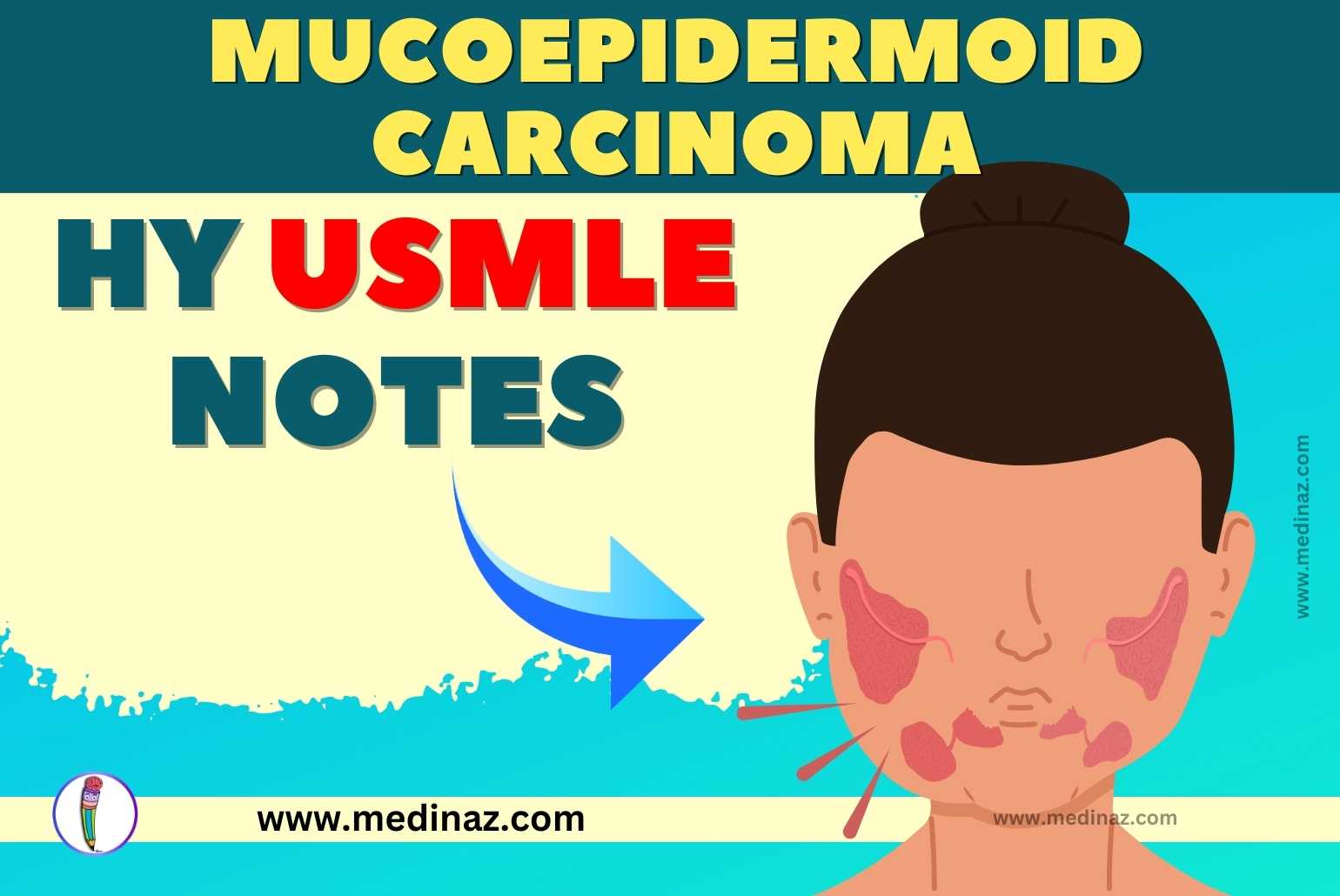Mucoepidermoid Carcinoma USMLE Notes & Mnemonics contains all the high-yield points you need to know.
- Mucoepidermoid Carcinoma: A type of salivary gland tumor characterized by a mix of mucus-secreting cells and squamous-like epithelial cells.
Epidemiology:
- Most common type of malignant salivary gland tumor.
- Can occur at any age but is more common in adults. (Ref)
Pathology:
- Originates in the salivary glands, primarily the parotid gland.
- Histologically, contains a mixture of mucus-secreting, squamous, and intermediate cells.
Clinical Features:
- Asymptomatic Mass: Often the first sign, typically in the parotid gland.
- Facial Pain or Numbness: If involving facial nerve.
- Swelling or Lump in the neck or mouth.
- Dysphagia or Voice Changes: If the tumor is large or in certain locations.
Diagnosis:
- Imaging: MRI or CT to evaluate the extent and for surgical planning.
- Fine-Needle Aspiration (FNA) Biopsy: To obtain a tissue diagnosis.
- Histopathological Examination: Shows characteristic cell types.
Grading:
- Graded as low, intermediate, or high grade based on cellular differentiation and aggressiveness.
Treatment:
- Surgical Resection: Primary treatment for localized disease.
- Radiation Therapy: For high-grade tumors or incomplete resection.
- Chemotherapy: Rarely used, more in advanced or metastatic disease.
Prognosis:
- Prognosis depends on the tumor grade and stage.
- Low-grade tumors have a good prognosis with surgical resection.
- High-grade tumors may be more aggressive with a worse prognosis.
Mnemonic: “Mucoepidermoid”
- Mixed cell types (mucous, squamous)
- Usually in salivary glands (especially parotid)
- Carcinoma (malignant)
- Often presents as painless mass
- Epidermoid (squamous-like cells)
- Potential for facial nerve involvement
- Imaging for extent
- Diagnosis by FNA and histopathology
- Excision is primary treatment
- Radiation for high-grade/incomplete resection
- May have variable prognosis
- Occurs at any age
- Intermediate cell types present
- Differentiation important for grading
Chart: Mucoepidermoid Carcinoma Features
| Feature | Description |
|---|---|
| Primary Site | Salivary glands, primarily parotid |
| Histopathology | Mucous, squamous, intermediate cells |
| Presentation | Painless mass, facial pain/numbness |
| Diagnosis | FNA biopsy, MRI/CT, histopathology |
| Treatment | Surgical resection, radiation, chemotherapy |
| Prognosis | Varies with tumor grade and stage |
Note: On the USMLE, mucoepidermoid carcinoma may be presented as a painless mass in the parotid area, with questions focusing on diagnosis, histopathological features, and management. Understanding the grading and its impact on prognosis is also important.
Check other important USMLE Notes
A Visual Learning Platform





